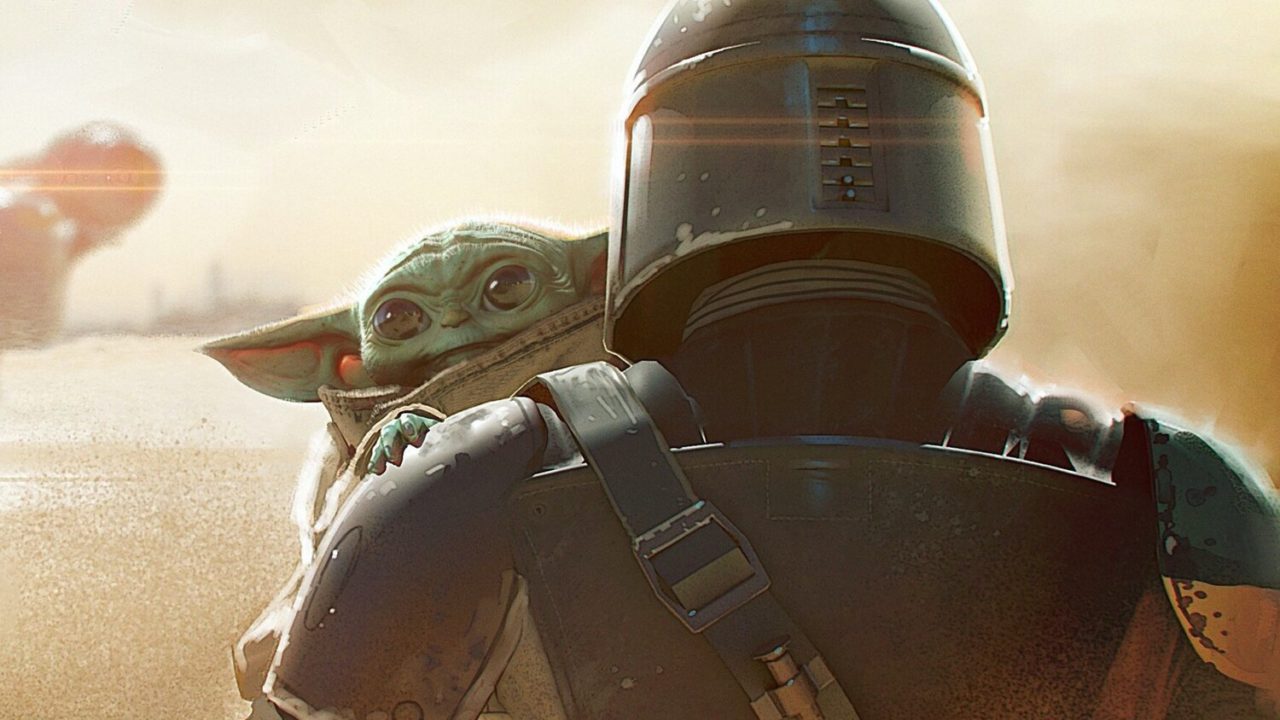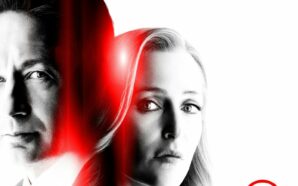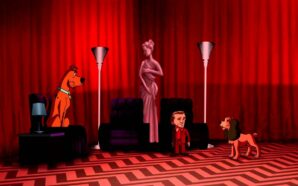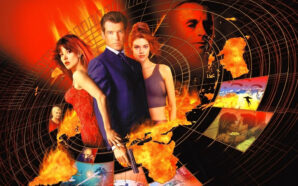In the lead-up to The Mandalorian airing, we were expecting a very different show than the one we received. Star Wars’ first foray into live-action television was presumed to be a wholly serialised affair, but the structure of the season turned out to be anything but. The first three episodes almost acted as an extended pilot, setting up the concept of the show; the next three were largely standalone adventures, and the final two returned to the opening storyline to give the season a sense of narrative closure. But even in those opening three episodes there was one that stood alone. When you look at ‘Chapter 2: The Child’ after the entire season has aired you might find it to be the odd one out. It’s reminiscent of a video-game fetch quest, is the shortest instalment of the show, and you could easily skip the episode and not notice you’d done so at all. All of this is true and yet I believe ‘The Child’ is far and away the best episode of the season.
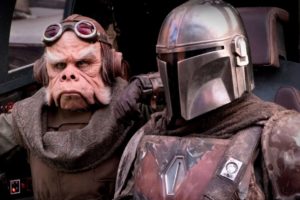 ‘Chapter 2’ is as stripped back as the Razor Crest after some Jawas have gotten to it. The plot is incredibly simple and there’s very little dialogue. In fact, it’s 11-minutes into the 33-minute episode until we hear the first words spoken. While The Mandalorian grunts more than Nathan Drake climbing some ancient temple, the episode relies on simple visual storytelling to, well, tell its story. Rick Famuyiwa directs the episode perfectly and, when combined with the physical acting of Pedro Pascal (or more likely his stunt doubles Lateef Crowder and Brendan Wayne) and Ludwig Göransson’s memorable score, we understand every emotion the helmeted protagonist is feeling without words needing to be spoken, as well as just the gist of the overall storyline of Mando’s struggle to leave Arvala-7 with his quarry. George Lucas has spoken multiple times about how he always wanted Star Wars to work from the visuals and music alone (and certainly some scenes in the prequels would be better without his dialogue) and so ‘The Child’ delivers on this idea like no Star Wars project before it.
‘Chapter 2’ is as stripped back as the Razor Crest after some Jawas have gotten to it. The plot is incredibly simple and there’s very little dialogue. In fact, it’s 11-minutes into the 33-minute episode until we hear the first words spoken. While The Mandalorian grunts more than Nathan Drake climbing some ancient temple, the episode relies on simple visual storytelling to, well, tell its story. Rick Famuyiwa directs the episode perfectly and, when combined with the physical acting of Pedro Pascal (or more likely his stunt doubles Lateef Crowder and Brendan Wayne) and Ludwig Göransson’s memorable score, we understand every emotion the helmeted protagonist is feeling without words needing to be spoken, as well as just the gist of the overall storyline of Mando’s struggle to leave Arvala-7 with his quarry. George Lucas has spoken multiple times about how he always wanted Star Wars to work from the visuals and music alone (and certainly some scenes in the prequels would be better without his dialogue) and so ‘The Child’ delivers on this idea like no Star Wars project before it.
After seeing the marketing phenomenon that is Baby Yoda at the end of the first episode, ‘Chapter 2’ is the ultimate showcase of just how cute and powerful the little green fella can be. And yes, I know that technically the character is called The Child but come on, I’m following everyone else’s lead and calling him Baby Yoda until we get a proper name. It’s true that you could skip this episode completely and not really miss anything, with Mando’s decisions in the next episode still being well set up and paid off, and Baby Yoda’s force abilities can be seen as a given considering the two other members of his race we’ve seen have been Jedi. But, against Mando’s wishes, we see a relationship build between the bounty hunter and his target in ‘The Child’. The same also happens between the audience and the cute space baby, which makes the big moments in the next episode all the more powerful. While the plot is simplistic and like a video-game side mission, I think the episode does a brilliant job of examining these two primary characters. It also gives us some of the cutest and coolest Baby Yoda moments of the series, ranging from frog-swallowing, attempted Force-healing, and Mudhorn-lifting.
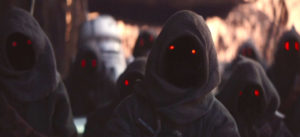 Before we finally got to watch the show, Star Wars fans generally had some wrong ideas about the series. I know I’m not alone in thinking that The Mandalorian was going to be a dark and gritty take on the Star Wars universe, starring a merciless bounty hunter, but ‘Chapter 2’ is often wonderfully, joyously silly in a very Star Wars-y fashion. It’s not set in the crime-ridden lower levels of Coruscant or the notorious moon of Nar Shaddaa, but rather in the middle of a desert with some Jawas. I mean, who doesn’t love Jawas? Even if it is bizarre seeing them on a planet that’s not Tatooine. But they have different colour eyes so I guess they’re a subspecies. Jawas are an inherently comedic species, with their funny language and mannerisms, but since their debut in 1977 they’ve also been quite threatening. Here we get to see both sides of the beloved species, with their merciless stripping of Mando’s ship and defense of their Sandcrawler, and their amusing quest for “Suca!”. That one Jawa who continues to remind The Mandalorian about Suca long after his comrades have quietened down never fails to make me chuckle. Oh, and seeing watching Mando disintegrate them into puffs of smoke is equal parts disturbing and hilarious.
Before we finally got to watch the show, Star Wars fans generally had some wrong ideas about the series. I know I’m not alone in thinking that The Mandalorian was going to be a dark and gritty take on the Star Wars universe, starring a merciless bounty hunter, but ‘Chapter 2’ is often wonderfully, joyously silly in a very Star Wars-y fashion. It’s not set in the crime-ridden lower levels of Coruscant or the notorious moon of Nar Shaddaa, but rather in the middle of a desert with some Jawas. I mean, who doesn’t love Jawas? Even if it is bizarre seeing them on a planet that’s not Tatooine. But they have different colour eyes so I guess they’re a subspecies. Jawas are an inherently comedic species, with their funny language and mannerisms, but since their debut in 1977 they’ve also been quite threatening. Here we get to see both sides of the beloved species, with their merciless stripping of Mando’s ship and defense of their Sandcrawler, and their amusing quest for “Suca!”. That one Jawa who continues to remind The Mandalorian about Suca long after his comrades have quietened down never fails to make me chuckle. Oh, and seeing watching Mando disintegrate them into puffs of smoke is equal parts disturbing and hilarious.
After stealing everything of value from the Razor Crest, Mando gives chase and we get our most dynamic and unique action set piece of the season as our protagonist tries to reach the top of the Jawas’ Sandcrawler. Well, unique in that it’s clearly inspired by the tank chase from Indiana Jones and the Last Crusade. In fact, the episode shares just as much DNA with that other Lucasfilm property as it does with Star Wars, and that’s alright by me. It really is a fun and engaging action sequence and Mando feels more like Indy than a Star Wars character. He’s just a talented guy in some armour rather than some superpowered hero. We see him get beaten and hurt and we relate to the struggle and pain he faces, just like Indiana Jones. The Mandalorian is no Jedi and so that allows for Star Wars villains to be threatening in ways we’ve never seen them be before, both the Jawas in this episode and the AT-ST in the fourth. In the previous episode he was in his element but here he’s a regular Donny from The Big Lebowski. His flaws and failings take centre stage and he has to rely on Kuiil to negotiate with the Jawas and help him rebuild his ship, and the titular child to save his life.
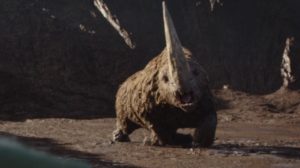 While The Mandalorian certainly isn’t cheap, sometimes the series can simply look like a TV show. The film-making techniques often highlight the fact that the actors are almost always stood on a stage surrounded by a massive screen, with flat backdrops and environments, which is not something that can be said for the recent Star Wars films. The obviousness of the production is most apparent in the disappointing fifth episode of the season – the only episode I dislike – but such problems don’t plague ‘Chapter 2’. In fact, during my latest rewatch of the series, this was the only episode where I didn’t notice the TV budget or evident soundstage. Everything feels almost feature worthy, from the locations to the puppetry to the CGI. The Mudhorn that the Mando has to fight in order to trade its egg for his ship looks fantastic and that fight is visceral and brutal. It also helps that the Mudhorn is very reminiscent of the Reek from Attack of the Clones which I loved as a kid.
While The Mandalorian certainly isn’t cheap, sometimes the series can simply look like a TV show. The film-making techniques often highlight the fact that the actors are almost always stood on a stage surrounded by a massive screen, with flat backdrops and environments, which is not something that can be said for the recent Star Wars films. The obviousness of the production is most apparent in the disappointing fifth episode of the season – the only episode I dislike – but such problems don’t plague ‘Chapter 2’. In fact, during my latest rewatch of the series, this was the only episode where I didn’t notice the TV budget or evident soundstage. Everything feels almost feature worthy, from the locations to the puppetry to the CGI. The Mudhorn that the Mando has to fight in order to trade its egg for his ship looks fantastic and that fight is visceral and brutal. It also helps that the Mudhorn is very reminiscent of the Reek from Attack of the Clones which I loved as a kid.
Once Mando has killed the Mudhorn, with a little help from Baby Yoda, he retrieves its egg and takes it to the Jawas. From their constant proclamations of ‘Suca’, we think the Jawas want to covet this egg and maybe they’ll treasure it or raise and train the baby Mudhorn growing within. But instead – in a moment equally funny and disgusting – they greedily consume the contents of the egg. It’s no coincidence that Baby Yoda travels in an egg-shaped hover carrier. This is exactly what The Client and his mysterious benefactor wish to do to the baby (seemingly cut him open and remove the Midichlorians within), and seeing the Jawas destroy something precious is a key part of The Mandalorian’s decision to save The Child in the next episode. The seemingly irrelevant side quest is actually a cool little metaphor and foreshadowing of what is to come. This is never explicitly stated but is instead done through simple visual storytelling and imagery, unlike the many plot-heavy, exposition-laden shows that dominate the medium.
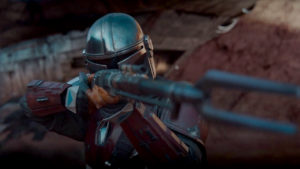 I’ve mentioned that the episode is similar to that of a video-game side mission, a fetch quest that has you battle some powerful monster and gain the materials to level up, and it’s true. However, it’s also true that the episode follows a structure and style reminiscent of classic film serials. These serials were the original inspiration for Star Wars back in the 70’s and the unique feel of them has also been tapped into in several episodes of The Clone Wars, and even some of The Rise of Skywalker’s best moments ape these old fast-paced and weird sci-fi adventure stories. Like with the limited dialogue, this storytelling style aligns the episode with the true heart of Star Wars laid out by George Lucas in 1977 much more than the seven other instalments of the show. It’s not that the franchise can’t change or evolve because it absolutely can and should, but returning to the core values and influences of Star Wars at the beginning of the franchise’s first foray into live action television was an incredibly wise decision, and pushes ‘The Child’ to be the best episode of The Mandalorian’s first season.
I’ve mentioned that the episode is similar to that of a video-game side mission, a fetch quest that has you battle some powerful monster and gain the materials to level up, and it’s true. However, it’s also true that the episode follows a structure and style reminiscent of classic film serials. These serials were the original inspiration for Star Wars back in the 70’s and the unique feel of them has also been tapped into in several episodes of The Clone Wars, and even some of The Rise of Skywalker’s best moments ape these old fast-paced and weird sci-fi adventure stories. Like with the limited dialogue, this storytelling style aligns the episode with the true heart of Star Wars laid out by George Lucas in 1977 much more than the seven other instalments of the show. It’s not that the franchise can’t change or evolve because it absolutely can and should, but returning to the core values and influences of Star Wars at the beginning of the franchise’s first foray into live action television was an incredibly wise decision, and pushes ‘The Child’ to be the best episode of The Mandalorian’s first season.
Is ‘Chapter 2: The Child’ your favourite episode of The Mandalorian? How would you rank the eight episodes we’ve seen so far? Let me know in the comments and be sure to geek out with me about TV, movies and video-games on Twitter @kylebrrtt.




